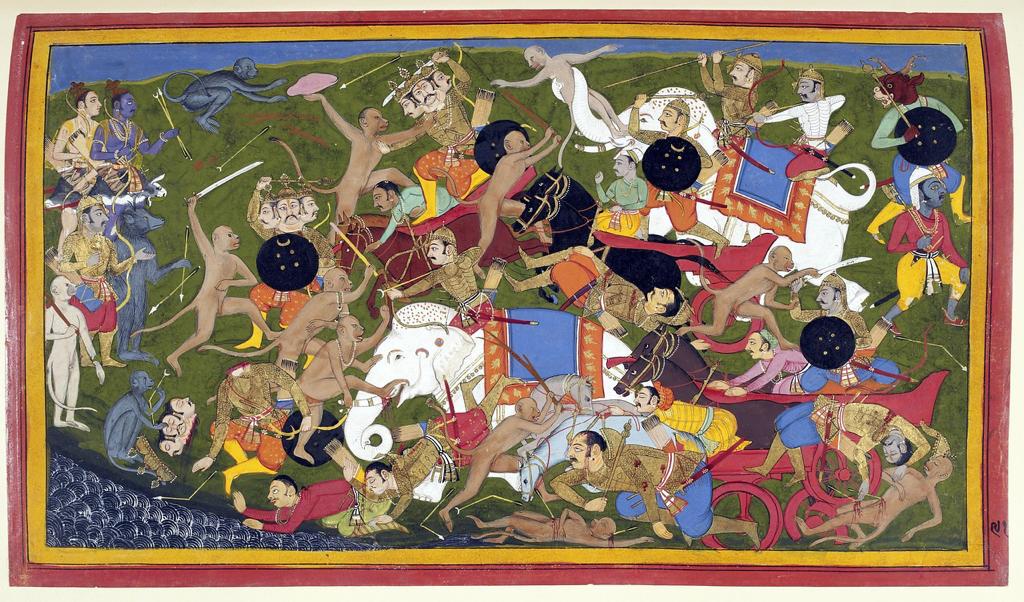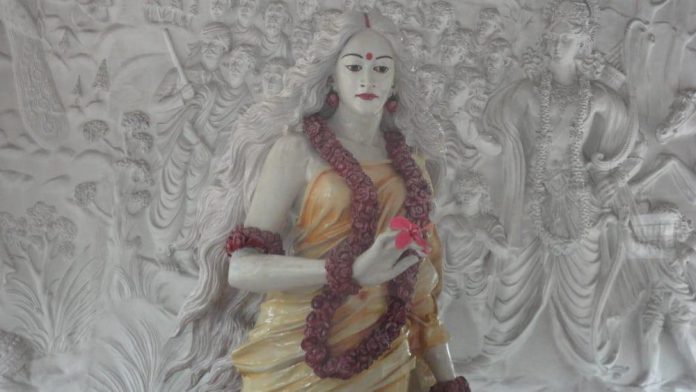To Lord Rama, to Raavan and to Lakshman and Lord Hanuman, the chant of Ramayana is owed respectfully. To Lord Rama for his righteousness and pure divinity, to Raavan for his antagonism and devotion to Lord Shiva, and to Lakshman and Lord Hanuman for their strengths and unchallengeable admiration for Lord Rama. To Goddess Sita, Sarama, Mandodari, Kaikeyi and various other remarkable women in Ramayana, history has done little justice.
When we think of Ramayana, we remind ourselves of the Lord we pray to for his virtuous values but behind and on the forefront of the victory of the good were women we effortlessly forget. Millenniums after this holy epic blessed the Indian soil, there finally was one woman who paid justice to all the women in Ramayana in her book, ‘Forest of Enchantments.’
Chitra Banerjee Divakaruni, the author of ‘Forest of Enchantments’ for the first time made the devout believers of this epic realise that it belonged as much to the women as it did to the men. She closely captured the stories of every female and then inked them into what Goddess Sita called the Sitayana. She allowed the women in Ramayana to speak for themselves, she left them blank pages to narrate their stories and gave us a memoir we could cherish forever. She placed in their forgotten tales a respectful reminiscence that we don’t mourn for but look for in ourselves. A piece of their endurance, strength, elegance and beauty is in each one of us and Divakaruni only helps us find that.
Before the turns of life could seep into her resilience and values, Goddess Sita first learnt it from her beloved mother, Sunaina. Queen Sunaina’s husband and the King of Mithila, Janak found himself mesmerised mostly in the spiritual world. He was a man free of material pleasures, his delight rested in religious and spiritual morals, Queen Sunaina however was a practical woman. She balanced worship with rationality. Behind his administrative proclamations were the pieces of advice given by his Queen. She had a quick wit and caught onto intentions, actions and repercussions in a swift scan. Goddess Sita had a pleasantly warm nature, a gentleness in her responses and a wide acceptance in her smile, truly resembling her mother.
Such respected values prepared the upbringing of Queen Sunaina’s second daughter, Urmilla. Her personality like the enchanting breeze was chirpy and impulsive, and her temper like the gust was unpredictable. Her expectations of a vibrant future in the majestic palace were left only in the black and whites of sorrows ageing the palace walls. When Lakshman denied her offer to accompany him to the forest because he couldn’t bear the distraction, her heart found itself shattered. To hear herself being referred to as a distraction only added to her pain. Within hours, she lost both her husband and her sister to the wilderness of the forest. Her endurance tested itself when she slept for 14 years, a sacrifice she made because Lakshman pledged to protect his brother and his wife and denied himself the leisure of sleep. This allowed Lakshman to defeat Meghanada in the war for only a person who hadn’t slept for 14 years could trounce him. This is precisely why her character has been less spoken of but within the palace chambers, she was silently making a compromise no one knew of.

Welcomed into the Raghuvansh family with prosperous chants and saffron tilaks, the Princesses found their solace and comfort in the Queens of Ayodhya. Queen Kaushalya with a golden heart and a nurturing smile made Sita feel at home in Ayodhya. Although feeling neglected by Dashrath after he married Kaikeyi, she kept hoping he’d return to her someday. Even when her son, the one who she found her escape in left for exile, she never had a vengeful eye for Kaikeyi. Dashrath’s ruining health and the grieving silence in the palace corridors could have prompted her to give in to the severity of life, but she instead became a true symbol of holding on amongst other women in Ramayana.
Queen Kaikeyi, at whom to this day people look with much coldness in their eyes, was a tough warrior in an age where only a woman’s prayers touched the battlefield. She had a rather unmerciful childhood with a cruel father and separated from her mother which made her upbringing largely insecure and it unfolded later in her years as protection for her son. Saving Dashrath’s life with a roar of courage on the battlefield as she fixed the chariot, she became his favourite wife. Kaikeyi completed her part when it concerns antagonism but she can be seen as a largely humanistic character for she was a mix of both good and evil.
Queen Sarama and Mandodari, both lesser recognised women in Ramayana, were Goddess Sita’s aids in Lanka. Away from her husband and trapped wickedly by Ravana, Sita could confide in these women. Queen Mandodari is said to have protected Sita’s life from Ravana informing him of the sinful crime and karma he was calling on himself. Vibhishana leaving Sarama behind to join the princes of Ayodhya reduced her life to loneliness and added a thorn to her flesh when he became the very reason for their son, Taranisena’s death.
And finally, the woman who completed both Ramayana and Sitayana, Goddess Sita. Her story from her childhood, the beloved of her father and her love for nature to her marriage with Lord Rama and then her suffering in both her exiles and Lanka are known well to us. She became the epitome of strength in the challenges of life. She had a fire in her soul but only tenderness in her eyes. She stood with faith in every test of her life but when it tested her reputation, she asked her mother Earth to take her back in the womb she was born from.
Be it Mandodri or Kaushalya’s tolerance for their husbands when they tried to seek love beyond them or be it Sarama or Urmilla whose lives were spent more alone than in togetherness, every woman in Ramayana wrestled for her happiness. They lived in a time where revolution was within oneself with patience and longing but if there is something we must learn from these women, it is to stand up every time we are wronged, for they did it every time they had the chance. Every time we stand up for the equality and freedom of the women race, we stand up for all the women in Ramayana who contributed largely to the liberal society we are born in.
In Chitra Banerjee Divakaruni’s ‘Forest of Enchantments,’ narrated beautifully by Sita, each of these powerful women added their colours to the ink resting on the folios.































